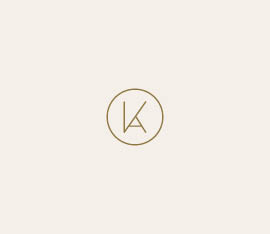Nobel-Prize winning German bacteriologist and pioneer in hematology, immunology, cellular pathology, and disease treatment (1854-1915). Autograph Letter Signed "P. Ehrlich". n.p.; undated. 8vo. 3 pp. German, on personal stationery.
$ 3,730 / 3.500 €
(81498)
„Entschuldigen Sie, daß ich erst heute dazu komme, Ihnen für Ihre kostbare Sendung meinen allerherzlichsten Dank auszusprechen. Sie werden sich selbst vorstellen können, mit welcher Freude und Spannung ich dieselbe begrüßt habe; ich bleibe und fühle mich stets als Ihr tief verbundener Schuldner. Ich denke natürlich das Material, soweit folgende Skala Thiamin Methylenazur Methylenblau Thianalin Methylenviolett Thianol. Es ist mithin von den geprüften Körpern das Thiamin am leichteten, das Thiaanol am schwersten reduzierbar.
[…]“ Paul Ehrlich (1854-1915) was a Nobel prize-winning German Jewish physician and scientist who worked in the fields of hematology, immunology, and antimicrobial chemotherapy. He is credited with finding a cure for syphilis in 1909. Letter has usual folds, slight separation of crease at bottom; otherwise good..
Mediziner und Nobelpreisträger (1854-1915). Typed letter signed ("Ehrlich"). Frankfurt a. M. 04.12.1912. 1 S. 4to.
$ 1,598 / 1.500 €
(936138/BN936138)
To the Austrian pathologist Richard Kretz (1865-1920), sending a medical certificate for Dr. [Konrad] Helly (not enclosed): "Sehr geehrter Herr Kollege! Ich muss sehr um Entschuldigung bitten, dass ich Ihr freundliches Schreiben vom 25. Nov. nicht früher beantworten konnte, weil ich einige Tage verreist war. Das Attest für Herrn Dr. [Konrad] Helly stelle ich gern aus und erlaube mir, es gleich beizufügen [...]". - On headed paper.
Mediziner und Nobelpreisträger (1854-1915). Autograph postcard signed. Frankfurt a. M. 1 S. 8vo. Mit eh. Adresse.
$ 1,758 / 1.650 €
(936139/BN936139)
To the Viennese pathologist Richard Kretz (1865-1920), concerning a shipment: "Sehr geehrter Herr College. In Beantwortung Ihrer Karte theile ich Ihnen ergebenst mit, dass sich meine Sendung [...] mit derselben gekreuzt haben muss. Ich hoffe aber, dass Sie inzwischen das neue erhalten haben. Wenn nicht, bitte ich um eine Zeile der Benachrichtigung [...]".
Mediziner und Nobelpreisträger (1854-1915). Autograph lettercard signed. O. O. u. D. 2 SS. Qu.-kl.-8vo.
$ 1,918 / 1.800 €
(76256/BN48918)
To an unnamed addressee, sending "a small box with samples of the compounds of my collection". - On monogrammed paper of his wife Hedwig.

Mediziner und Nobelpreisträger (1854-1915). Eigenh. Schriftstück mit Unterschrift. O. O. 8vo. 1 p.
$ 1,918 / 1.800 €
(61460)
An seine Assistentin Frida Leupold über einen neuen Versuch mit Präparat 418, einem Arsenophenylglycin, das bei der Behandlung schwer kranker, im Sterben liegender Tiere gute Erfolge zeitigte.
sold
E. Brief mit U.
Autograph ist nicht mehr verfügbar
Paul Ehrlich (1854–1915), pathologist; father of chemotherapy; Nobel laureate. A.L.S., “PE”, Frankfurt, 8 October, n. y. [1901?], 2 pp. 4to. To a highly esteemed and dear friend, whom he requests to intercede for Dr. [Artur] Pappenheim, “who is aiming to achieve professorship at your faculty”. Ehrlich recommends the haematologist “as a truly assiduous man, full of enthusiasm for science, who has produced exceptional work in the fields of blood and color. His latest book about pigments [i. e., Grundriß der Farbchemie zum Gebrauch bei mikroskopischen Arbeiten, Berlin 1901], of which I read the proofs, is an excellent achievement […] A few days ago I visited Berlin for 12 hours (in re foot-and-mouth disease) […] I spoke to Koch for only a minute […] He struck me as good-looking and also good-tempered […]”.




